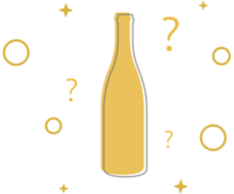In January 2025, the Alcohol and Tobacco Tax and Trade Bureau (TTB) expanded “standard of fill” regulations for wine and distilled spirits available in the U.S. by authorizing 13 additional standards of fill for wine containers and 15 standards of fill for distilled spirits containers.
TTB is also amending its regulations to eliminate the distinction between standards of fill for distilled spirits in cans and those for distilled spirits in containers other than cans.
Over the past year and a half, a small but growing number of bottles in these newly-approved sizes have begun to appear on U.S. shelves. U.S. consumers can expect to see more ahead—and inside many of those bottles, a broader array of wine and spirits that have never made their way to the U.S. before.
What changed and why?
These regulatory amendments provide more flexibility to industry members and provide consumers with more purchasing options. Specifically, wine industry members may now use the following new standards of fill: 180, 300, 330, 360, 473 (16 oz.), 550, 568 (19.2 oz), 600, 620, 700, and 720-milliliter sizes and 1.8 and 2.25-liter sizes. These are in addition to those that had already been approved and listed.
Distilled spirits industry members may now use the following new standards of fill: 187, 250, 331, 350, 355, 475, 500, 570, 700, 710, and 945-milliliter sizes and 1.5, 2, 3, and 3.75-liter sizes. All standards of fill for distilled spirits are now approved for cans and containers other than cans.
Designed to provide bottlers with flexibility, facilitate domestic and international sales, and provide broader purchasing options to consumers, the revised law also opens the door for American distilleries to produce 700ml bottles for export markets (as well as for sale in the U.S.) for the first time, although adoption has been slow so far.
Meanwhile, it’s been a particular boon for small independent bottlers and distilleries seeking to export products to the U.S.
Expanded options for importers
Raj Sabharwal, the founding partner of Glass Revolution Imports, was among those eagerly anticipating expanded bottle sizes for spirits.
His initial test run was an import of Panamanian rum. Since then, he’s also imported 700ml sizes of Scotches, English single malt whiskies, and, most recently, rum.
“I get more options and opportunities for what we import,” he explains. “we’re not constrained by having to dictate, we’ll take 10 cases of this in 750ml and we can’t get anything more after that. It gives me greater scope in depth and breadth of our product lines.”
The switch can also help ease supply chain-related issues, he adds: on a global basis, far more 700-ml bottles are produced than 750-ml counterparts.
How to combat the perception of “shrinkflation?”
One potential challenge: convincing American consumers that slightly smaller bottle sizes aren’t the result of “shrinkflation,” the practice of reducing the size or quantity of a product while keeping the price the same (or higher).
Yet, smaller bottle sizes may not automatically equal smaller prices. Even advocates like Sabwarhal, who had announced intent to “keep prices 6% lower than a 750ml” in January 2021, when his first 700ml label was approved by the TTB, note that steep increases in shipping costs and raw materials (like glass) may prevent that from happening.
“We’re paying four times more than we were three years ago for a bottle, and it takes longer to get there,” he explains. However, “Most people are aware of the impact of shipping costs on everything; it’s not limited to the drinks industry.”
Will standards of fill be eliminated?
What’s next? The TTB is exploring a more comprehensive proposal to add even more sizes, specifically for wine, or eliminate all standard sizes, except for a minimum size for wine and a minimum and maximum size for distilled spirits. The proposal also refers to distilled spirits in metal containers, specifically cans “that cannot be readily reclosed after opening,” in addition to bottles.
If this proposal goes through, it will please those like Gordon Little—the owner of Little Peacock Imports, which specializes in products made in Australia—who would like to see an even more expanded range of bottle sizes and shapes.
For example, while the 2020 expansion enabled 50ml mini-bottles for import, now the smallest sample size for spirits, some producers would love to bring in 40ml and 30ml bottles to include in boozy Advent calendars or promotional offerings.
“I think there should be lots more sizing available,” Little says. “Every other product can come in its own size, why are we disallowing that with alcohol?”

